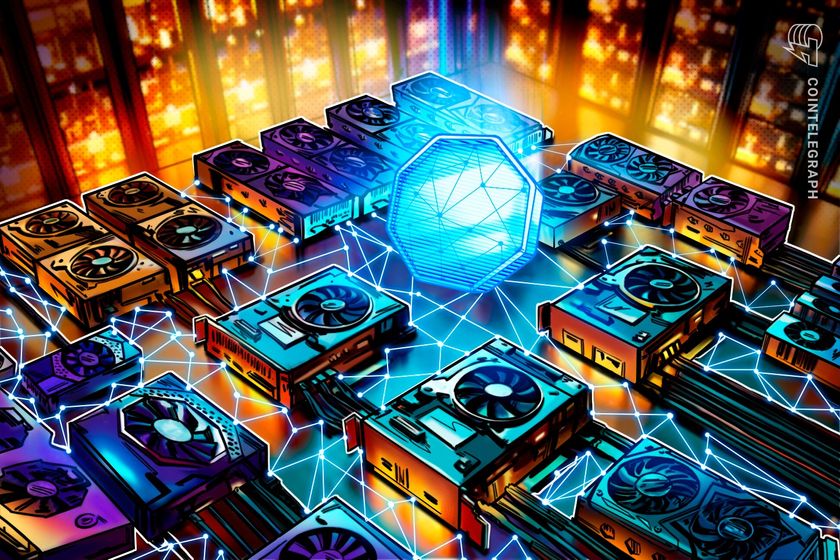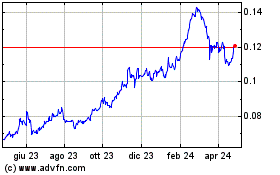

Key takeaways
-
Render Network connects GPU owners with creators, allowing users
to rent idle graphics power for AI training, 3D rendering and
crypto-related projects.
-
The RNDR token powers the ecosystem, enabling fast, transparent
and decentralized transactions between creators and node
operators.
-
Decentralized rendering is more accessible and cost-effective
than traditional centralized GPU services, solving issues such as
pricing, scalability and vendor lock-in.
-
Proof-of-render ensures verified outputs, rewarding only
completed, validated tasks while maintaining blockchain-level trust
and transparency.
The hunger for powerful graphics processing units (GPUs) has
skyrocketed. Whether it’s training complex AI models or rendering
high-fidelity 3D graphics, the demand often outstrips supply.
Traditional centralized GPU services, while effective, can be
costly and sometimes inaccessible to smaller developers or artists.
This is where the Render Network steps in, offering a decentralized
approach to GPU
rendering.
By connecting individuals who have idle GPU power with those who
need it, Render Network creates a collaborative ecosystem that
benefits both parties. This not only democratizes access to
high-performance computing but also introduces a crypto-economic
model, utilizing its native RNDR token to
facilitate transactions.
In the sections that follow, you’ll learn how Render Network is
contributing to the evolution of AI development and 3D rendering
through decentralization and blockchain
technology.
What is Render Network?
At its core, Render Network is like an Airbnb for GPU power. If
you’ve got a powerful graphics card sitting idle, you can rent it
out. And if you’re someone building an AI model or rendering a
complex 3D scene but don’t have enough GPU muscle, you can tap into
that unused power — on demand.
Here’s how it works:
Creators
These are the people who need serious computing power — think AI
researchers training
models, 3D artists rendering animations or developers working
on visually demanding projects. Instead of buying expensive
hardware or paying top dollar for centralized cloud
services, they can just hop on Render Network and get access to
what they need when they need it.
Node operators
On the flip side, there are folks who have GPUs collecting dust
(or at least not being fully used). Maybe it’s a gaming rig that’s
idle during work hours or a small mining setup looking for a better
use case. These operators can plug into Render Network, offer up
their GPU power, and earn crypto — specifically RNDR tokens — for
their trouble.

RNDR token
The RNDR token (RNDR) is the fuel that keeps
this whole ecosystem running. It’s the currency used to pay for
jobs on the network. Creators pay in RNDR; operators earn in RNDR.
Everything happens transparently onchain, and the token system
helps keep things fair and efficient.
In short: Creators get access to affordable, decentralized
computing power; node operators get rewarded for sharing their
resources; and RNDR tokens make it all tick. It’s a win-win setup
that’s especially useful in AI and crypto-heavy workflows.

Did you know? Render Network
employs blockchain technology to ensure that every transaction and
rendering task is securely recorded, promoting transparency and
trust among users.
The role of decentralization in GPU rendering
If you’ve ever tried renting GPU power from a big cloud
provider, you know it can get expensive
fast. And even then, you’re often competing with major
corporations for access to the best hardware. The whole system
works, sure, but it’s not exactly built with flexibility or
accessibility in mind.
That’s where decentralization comes in. Render Network flips the
script by spreading the workload across a global network of
independent GPU owners. Instead of relying on a single provider,
you’re tapping into thousands of available machines — from gaming
rigs to pro-grade render farms — that might otherwise sit idle.
What’s the problem with centralized GPU rendering?
Centralized services come with a few key headaches:
-
It’s pricey: Renting powerful GPUs from the
likes of Amazon Web
Services or Google Cloud
can eat through your budget quickly, especially if you’re running
long jobs like training an AI model.
-
Scalability is limited: If you suddenly need
more power, scaling up isn’t always smooth or instant. You’re stuck
waiting in line — or paying more for priority access.
-
Access isn’t equal: Big corporations tend to
hoard the best GPU availability, which makes it harder for smaller
teams or indie creators to get what they need when they need
it.
-
Vendor lock-in is real: Once you build your
pipeline around one provider, switching later can be a pain (and
expensive).
Why decentralization makes more sense
Now, here’s what a decentralized network like Render offers
instead:
-
Lower costs: Because you’re tapping into
existing resources that would otherwise be unused, pricing tends to
be way more affordable.
-
Flexible scaling: Need more power? The network
can grow with you — just pull in more nodes.
-
Equal access: There’s no gatekeeping. Anyone
can request GPU resources, and anyone can provide them. It’s a much
more level playing field.
-
Earn while you sleep: If you’ve got a powerful
GPU, you can make it work for you by sharing it on the network when
you’re not using it.
All in all, decentralized GPU rendering is quickly becoming the
practical choice for AI builders, 3D artists and crypto-native
developers who want more control over their tools and budget.
The crypto economy within Render Network
As you briefly explored, at the heart of Render Network’s
decentralized rendering platform is its native cryptocurrency, the
RNDR token. Let’s dive deeper.
RNDR token mechanics
The RNDR token serves as the primary medium of exchange within
the Render Network. Creators use RNDR tokens to pay for rendering
services, while node operators earn these tokens by providing their
GPU power to process rendering tasks. This system creates a
self-sustaining economy where computational resources are
efficiently allocated and fairly compensated.
Additionally, a small percentage of RNDR tokens, ranging from
0.5% to 5%, is charged on every transaction to support the ongoing
development and maintenance of the network.
Earning RNDR tokens
Once onboarded, node operators can connect their GPUs to the
network and start accepting rendering jobs. After successfully
completing and submitting a rendering task, the work undergoes
verification to ensure quality standards are met. Upon approval,
the corresponding RNDR tokens are transferred to the node
operator’s digital wallet as
compensation for their contribution.
Spending RNDR tokens
Creators looking to access rendering services can acquire RNDR
tokens through various cryptocurrency
exchanges. Once they have the tokens, they can submit their
rendering projects to the network. The system calculates the
required RNDR tokens based on the project’s complexity and resource
demands. After the rendering is completed and the output meets the
creator’s expectations, the RNDR tokens are released from
escrow and
transferred to the node operators who processed the job.
This token-based
economy not only streamlines the transaction process within the
Render Network but also fosters a collaborative environment where
both creators and node operators benefit from the decentralized
exchange of rendering services.

Did you know? Render Network
utilizes a unique proof-of-render mechanism, which validates
completed rendering tasks before compensating node operators. This
system mirrors blockchain’s transaction validation processes,
ensuring that only verified work is rewarded.
Getting started with Render Network
Here’s how to get started with Render Network.
For creators
Setting up an account and submitting rendering tasks require the
following:
-
Obtain an OctaneRender license: Ensure you have
an active OctaneRender license or subscription, which can be
purchased from OTOY.
-
Access the Creator Portal: With your
OctaneRender credentials, log in to the Creator Portal.
-
Prepare your project: Export your project as an
ORBX file using OctaneRender. This format encapsulates all
necessary assets and settings for rendering.
-
Submit your job: Upload the ORBX file to the
Creator Portal, configure your rendering parameters (such as
resolution and sample size), and choose a service tier that fits
your needs.
-
Monitor and retrieve results: Once submitted,
you can monitor the progress of your rendering tasks through the
portal. Upon completion, download your rendered assets directly
from the platform.
For node operators
Registering GPUs on the network requires:
-
Express interest: Complete the Render Network
Interest Form to join the onboarding queue.
-
Await onboarding instructions: Once a slot
becomes available, the Render Network team will provide further
instructions for setting up your node.
By following these steps and best practices, both creators and
node operators can effectively engage with the Render Network,
leveraging its decentralized infrastructure for efficient rendering
solutions.
A bright future for Render Network?
Render Network is quickly becoming a go-to solution for anyone
needing serious GPU power — especially in AI and crypto.
Decentralizing access to high-performance computing makes rendering
and model training faster, cheaper and way more accessible.
What’s exciting is where it’s
headed. The network is expanding to support more advanced AI
workflows and exploring deeper integration with other blockchain
ecosystems. That means more tools, more flexibility and even
broader use cases — whether you’re building with AI, working in 3D
or developing onchain applications.
At the end of the day, Render Network is creating a new kind of
infrastructure where creators and GPU owners can work together,
earn and scale. Whether you’re here to build or contribute, it
could be a space worth jumping into.
...
Continue reading How to use Render Network for
decentralized GPU rendering
The post
How to use Render Network for decentralized GPU
rendering appeared first on
CoinTelegraph.
Grafico Azioni TRON (COIN:TRXUSD)
Storico
Da Mar 2025 a Apr 2025

Grafico Azioni TRON (COIN:TRXUSD)
Storico
Da Apr 2024 a Apr 2025
